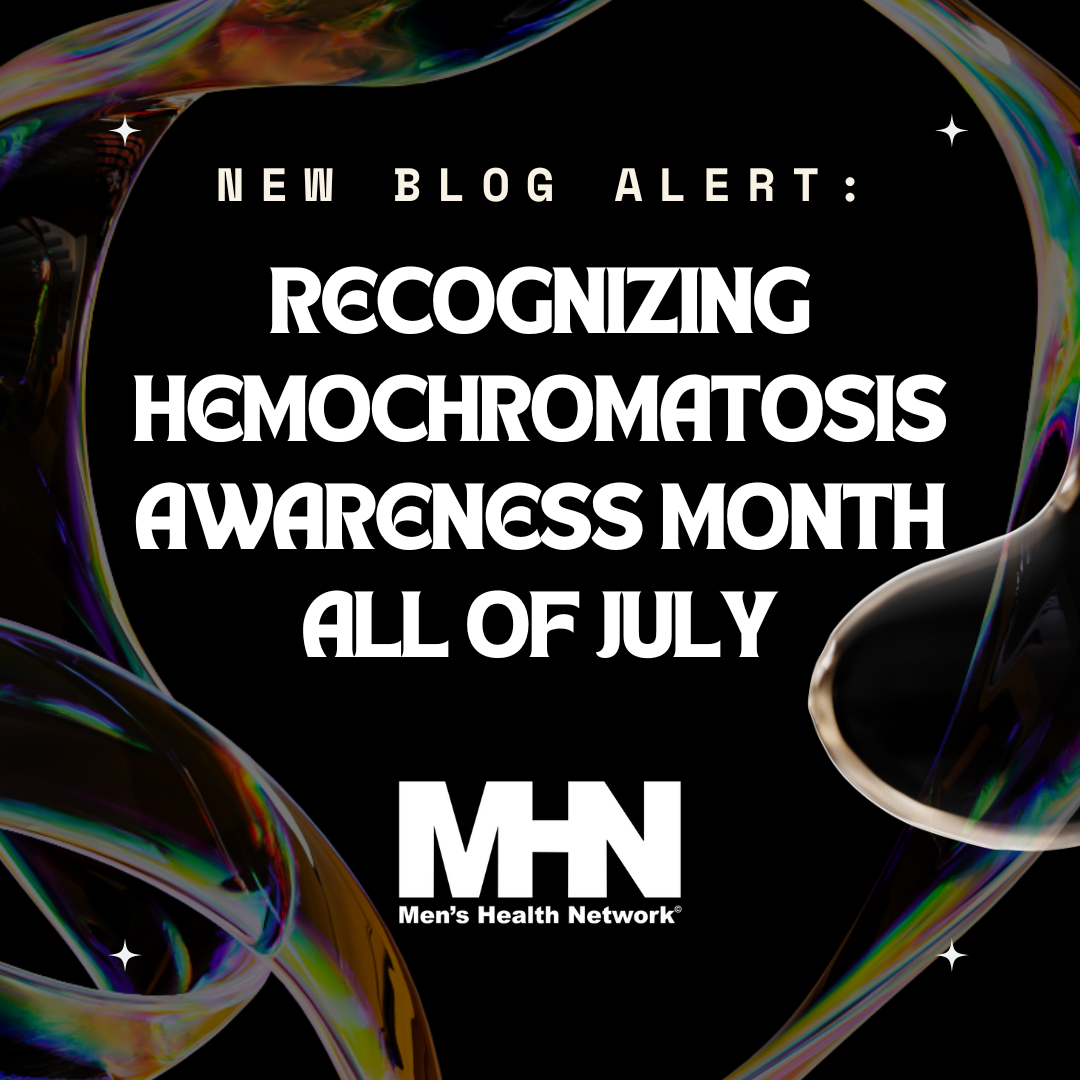Recognizing Hemochromatosis Awareness Month This July
By: Douglas M. Weine, MD
July marks National Hemochromatosis Awareness Month, a crucial time to educate and inform the public about this often-overlooked disorder. Hemochromatosis, commonly known as iron overload disorder, can lead to severe health complications if left untreated. Men especially can benefit from the educational side of Hemochromatosis Awareness Month, as they are more likely to see the effects of this condition earlier in life. By raising awareness, we can encourage early detection and effective management, offering better outcomes for those affected.
Understanding, Recognizing, and Caring for Hemochromatosis
Understanding, recognizing, and caring for hemochromatosis is essential for mitigating its potentially severe health impacts. Learning to recognize the symptoms, which can be subtle and nonspecific, is a crucial first step. These symptoms include fatigue, joint pain, abdominal pain, and skin discoloration. Early detection through blood tests and genetic screening is vital to prevent organ damage. Caring for hemochromatosis involves regular medical monitoring, therapies to remove excess iron, and lifestyle adjustments. Awareness and education are key to ensuring those affected receive timely and effective treatment.
What is Hemochromatosis?
Hemochromatosis is a condition where the body absorbs and stores too much iron. While iron is essential for producing red blood cells and overall health, excessive amounts can be toxic to the body. The surplus iron gets deposited in various organs, primarily the liver, heart, and pancreas, leading to potential damage and dysfunction. Primary, or hereditary, hemochromatosis is the most common form, and is caused by genetic mutations passed down through families. Secondary hemochromatosis develops as a result of anemia, alcoholism, and other disorders. This type of hemochromatosis has a more promising prognosis when detected early.
Who is Affected by Hemochromatosis?
Hemochromatosis is one of the most common genetic disorders in the United States, particularly affecting those of Northern European descent. While both men and women can have the condition, men are more likely to experience symptoms and complications earlier in life. The reason for this gender difference is that women lose iron through menstruation and pregnancy, which can delay the onset of symptoms. The risk increases for women after menopause or a hysterectomy.
Family history plays a significant role in the risk of developing hemochromatosis. If a close relative has the disorder, there’s a higher chance that you might have it too. It’s essential for family members to be aware of their genetic predisposition and to get screened if necessary.
Treating Hemochromatosis
Early detection is crucial in managing hemochromatosis effectively. Blood tests to measure iron levels and genetic testing can confirm the diagnosis. If diagnosed early, treatment can prevent organ damage and other severe complications. The primary treatment for hemochromatosis is phlebotomy, a procedure similar to blood donation, where blood is regularly removed to reduce iron levels. In some cases, chelation therapy, which involves taking medication to remove excess iron, may be used.
Lifestyle adjustments can also help manage iron levels. Avoiding iron supplements and vitamin C (which increases iron absorption), limiting alcohol consumption, and steering clear of raw seafood (which can cause infections in those with high iron levels) are recommended practices.
How to Recognize Hemochromatosis Awareness Month
National Hemochromatosis Awareness Month is an excellent opportunity to educate yourself and to spread the word to others about this condition. To recognize Hemochromatosis Awareness Month, consider any of the following:
- Assess Your Risk and Get Tested: Put together a family medical history, assess your risk, and schedule a screening for hemochromatosis. You can also encourage your family and friends to get screened.
- Social Media Campaigns: Share information about hemochromatosis on social media platforms like Facebook, Twitter, and Instagram. Use hashtags like #HemochromatosisAwareness and #IronOverload to reach a broader audience.
- Community Events: Organize or participate in local events such as health fairs, blood donation drives, or educational seminars focused on hemochromatosis.
- Educational Materials: Read up on hemochromatosis and distribute brochures, posters, and flyers in community centers, clinics, and hospitals to inform people about the signs, symptoms, and importance of early detection.
The Importance of Recognizing Hemochromatosis Awareness Month
Raising awareness about hemochromatosis can save lives. Increased awareness leads to better understanding and earlier diagnosis, which can prevent severe complications such as liver cirrhosis, diabetes, heart disease, and arthritis. Educating the public also helps reduce the stigma associated with genetic disorders and encourages people to seek medical advice without hesitation.
When to Talk to Your Doctor
If you have a family history of hemochromatosis or exhibit symptoms like chronic fatigue, joint pain, abdominal pain, or unusual skin discoloration, it’s essential to consult your healthcare provider. Early symptoms can be vague and easily attributed to other conditions, making it vital to consider hemochromatosis as a possibility. Tests to check the amount of iron in the blood can be a simple yet effective first step in diagnosis.
National Hemochromatosis Awareness Month is a time to spotlight the significance of this genetic disorder, promote early detection, and support those affected. By understanding, recognizing, and actively spreading the word about hemochromatosis, we can help prevent its serious consequences and improve the quality of life for affected individuals and their families.




